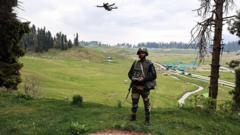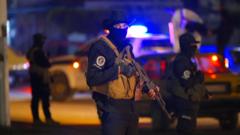As the United States begins to withdraw hundreds of troops from northeastern Syria, a transformation in the security environment emerges, particularly in light of the recent changes in the Syrian government structure.
U.S. Troop Withdrawal Signals Shift in Syria’s Security Landscape

U.S. Troop Withdrawal Signals Shift in Syria’s Security Landscape
Amid evolving conditions, the U.S. reduces military presence in Syria while assessing ongoing threats.
With the fall of President Bashar al-Assad last December, the U.S. military has initiated a troop reduction, decreasing personnel from approximately 2,000 to about 1,400. This move includes the closure of three operational bases—M.S.S. Green Village, M.S.S. Euphrates, and a smaller facility. U.S. officials have indicated that a reassessment will take place after 60 days to decide on future troop levels, with commanders suggesting that at least 500 troops should remain in the region.
While the Islamic State remains a significant threat, particularly in northeastern Syria, the collapse of Assad's regime has alleviated other dangers posed by Iran-backed militias and Russian forces that previously supported the Syrian government. Noteworthy is the recent agreement between Kurdish-led militias in the area and the new Syrian government, marking a vital step towards unifying a nation still grappling with instability.
Amid this backdrop, U.S. President Trump’s skepticism about retaining a military footprint in Syria looms large, as the prioritization of ground commanders' recommendations regarding base closures moves forward, having received approval from the Pentagon and Central Command. As developments continue, the security situation in Syria remains fluid, demanding close observation from both military and diplomatic perspectives.
While the Islamic State remains a significant threat, particularly in northeastern Syria, the collapse of Assad's regime has alleviated other dangers posed by Iran-backed militias and Russian forces that previously supported the Syrian government. Noteworthy is the recent agreement between Kurdish-led militias in the area and the new Syrian government, marking a vital step towards unifying a nation still grappling with instability.
Amid this backdrop, U.S. President Trump’s skepticism about retaining a military footprint in Syria looms large, as the prioritization of ground commanders' recommendations regarding base closures moves forward, having received approval from the Pentagon and Central Command. As developments continue, the security situation in Syria remains fluid, demanding close observation from both military and diplomatic perspectives.




















